Teaching is a dynamic and ever-evolving profession that requires a unique set of skills and qualities. As an experienced educator, I have come to understand the essential elements that make teaching effective and impactful. In this article, I will delve into these key elements, providing insights and strategies that can enhance your teaching practice.
First and foremost, a strong foundation of subject knowledge is crucial for any teacher. Being well-versed in the content you teach not only instills confidence but also allows you to effectively convey information to your students. Additionally, it enables you to adapt and tailor your lessons to meet the diverse needs of your learners.
Another vital element of teaching is the ability to create a positive and inclusive learning environment. Establishing a safe and supportive classroom atmosphere fosters student engagement and promotes effective learning. I’ll share practical techniques for building rapport with students, managing behavior, and promoting a sense of belonging.
Elements of Teaching
Teaching is a dynamic profession that requires a combination of skills, strategies, and knowledge. As an experienced educator, I understand the key elements that contribute to effective and impactful teaching. In this section, I will discuss these elements and how they positively influence the learning experience of kindergarten and preschool-aged children.
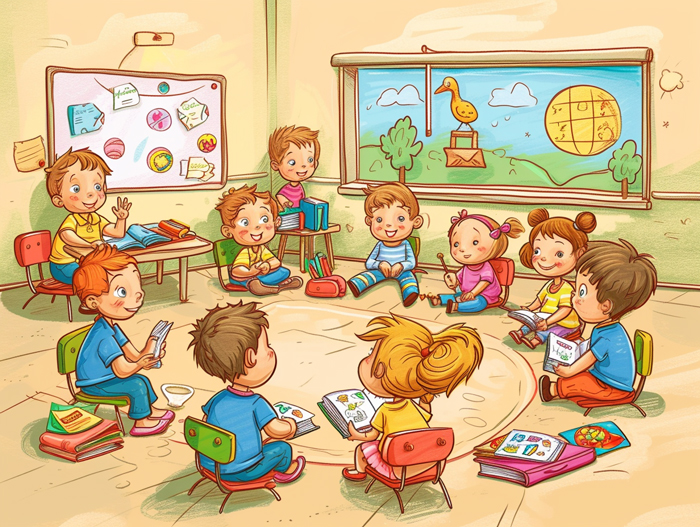
Subject Knowledge
One of the fundamental elements of teaching is having a strong foundation of subject knowledge. As a teacher, it’s crucial to be well-versed in the content you are teaching. This allows me to confidently convey information to young learners in a clear and concise manner. By understanding the subject matter thoroughly, I can adapt my lessons to the individual needs and learning styles of my students. This ensures that each child receives a comprehensive education tailored to their abilities.
Creating a Positive Learning Environment
Another essential element of effective teaching is creating a positive and inclusive learning environment. Kindergarten and preschool-aged children thrive in spaces where they feel safe, supported, and valued. As an educator, I prioritize building rapport with my students, as it promotes a sense of trust and mutual respect. Encouraging active engagement and fostering a sense of belonging among the students helps to establish a classroom culture where learning is both enjoyable and effective.
Building Relationships and Managing Behavior
Building positive relationships with my students is key to successful teaching. I make an effort to connect with each child on a personal level, learning their strengths and interests. By understanding their individual needs, I can create a supportive and nurturing environment that enhances their learning. Additionally, effective behavior management strategies are essential to maintaining a productive classroom. I employ various techniques, including implementing clear expectations, positive reinforcement, and age-appropriate discipline, to ensure a harmonious learning environment.
Adaptability and Differentiation
Being an effective teacher requires adaptability and differentiation. Every child has unique learning styles, abilities, and challenges. I strive to cater my lessons to accommodate these individual differences, ensuring that every child has equal opportunities for success. By providing a variety of instructional strategies and resources, I can engage all learners and address their specific needs. This inclusive approach fosters a sense of belonging and helps students reach their full potential.
Effective teaching entails a combination of subject knowledge, creating a positive learning environment, building relationships, managing behavior, and adaptability. By incorporating these key elements into my practice, I am able to create a rich and engaging educational experience for my kindergarten and preschool students.
The Role of a Teacher
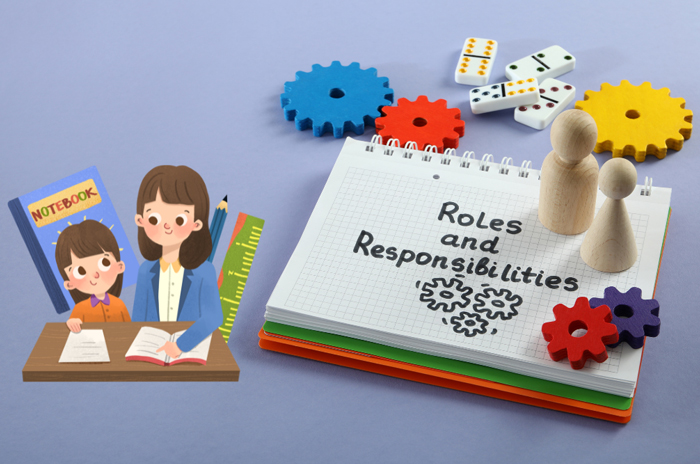
Creating a Positive Learning Environment
As a teacher, my role is to create a positive learning environment for my young students. I understand that children thrive in an environment where they feel safe, supported, and valued. I make it a priority to create a classroom atmosphere that fosters positivity and inclusivity.
To achieve this, I prioritize the following:
- Establishing clear expectations: I set clear rules and expectations from the beginning, ensuring that my students understand how to behave and interact with each other.
- Promoting kindness and respect: I encourage my students to treat each other with kindness and respect, fostering a sense of empathy and understanding within the classroom.
- Celebrating diversity: I embrace the uniqueness of each child and make sure that every student feels included, regardless of their background or abilities.
By creating a positive learning environment, I lay the foundation for my students to thrive and reach their full potential.
Establishing Clear Communication
Another important aspect of my role as a teacher is establishing clear communication with my students. Effective communication is key to ensuring that my students understand the lessons and objectives, as well as feel comfortable expressing their thoughts and concerns.
To achieve effective communication, I:
- Use clear and concise language: I avoid using complicated jargon or overwhelming my students with too much information. I break down concepts into simpler terms and use examples that resonate with them.
- Listen actively: I give my students my full attention when they speak, making them feel valued and heard. I also encourage questions and discussions, fostering a sense of engagement and curiosity.
- Provide regular feedback: I provide constructive feedback to my students, helping them understand their strengths and areas for improvement. I also make sure to acknowledge their efforts and achievements, boosting their confidence and motivation.
By establishing clear communication, I create an environment where my students feel supported and empowered to participate fully in their learning journey.
As a teacher, I play a vital role in creating a positive learning environment and establishing clear communication with my students. I strive to create a classroom where every child feels valued, respected, and heard. By incorporating these elements into my teaching practice, I set the stage for a rich and engaging educational experience for my young learners.
Lesson Planning and Preparation
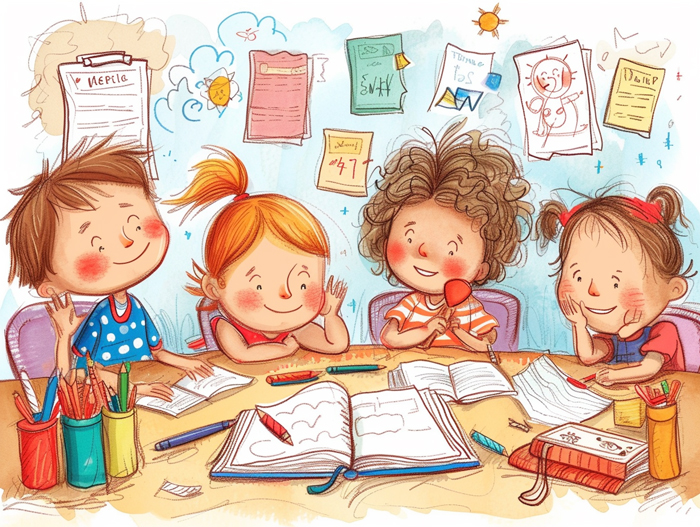
Setting Learning Objectives
When it comes to teaching young students, setting clear learning objectives is an essential element of effective lesson planning and preparation. These objectives serve as the guiding force in shaping the content and activities of each lesson. By setting specific and measurable goals, I ensure that my students know what they are expected to learn and achieve.
To create meaningful learning objectives, I consider the following factors:
- Age-appropriate skills: I take into account the developmental stage of my students and align my objectives with their abilities. For kindergarten and preschool students, this may include recognizing and writing simple words, identifying basic shapes and colors, and understanding simple instructions.
- Curriculum standards: I refer to the curriculum guidelines and standards established for kindergarten and preschool education. This helps me align my objectives with the overarching goals of the curriculum and ensures that my students are meeting the necessary milestones.
- Individual needs: I also consider the unique needs and abilities of each student. Some students may require additional support or challenge, and I tailor my objectives to accommodate their individual learning styles and abilities.
Choosing Appropriate Materials
Selecting the right materials is crucial in engaging young minds and facilitating effective learning experiences. Here’s how I make informed choices when it comes to materials for my lessons:
- Visual aids: Visual aids such as charts, diagrams, and colorful images are highly effective in capturing the attention of young learners. These visuals support their comprehension and retention of new concepts. I incorporate a variety of visual materials to make my lessons engaging and interactive.
- Hands-on activities: For kindergarten and preschool students, learning through play and hands-on activities is essential. I incorporate manipulatives, puzzles, and interactive games to promote active learning and help children grasp abstract concepts more easily.
- Age-appropriate books and resources: I carefully select age-appropriate books, stories, and educational resources that align with the learning objectives of each lesson. The use of captivating stories and interactive materials engages my students’ imagination and fosters a love for reading and learning.
By thoughtfully setting learning objectives and choosing appropriate materials, I enhance the effectiveness of my lessons and create engaging learning experiences for my kindergarten and preschool students. Teaching young learners requires careful planning and preparation, and these elements are key in promoting their academic growth and development.
Effective Instructional Strategies
As a teacher, I understand the importance of using effective instructional strategies to engage and educate my young students. In this section, I will discuss two key strategies that have proven to be successful in the classroom: differentiating instruction and incorporating active learning techniques.
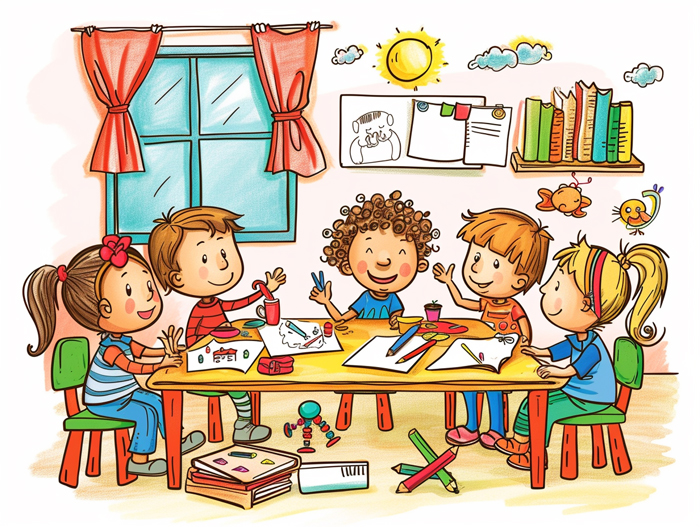
Differentiating Instruction
One size does not fit all when it comes to education, especially in a diverse classroom. To meet the individual needs and abilities of my students, I implement differentiated instruction. Here’s how I do it:
- Assessing Student Readiness: Before designing my lessons, I assess my students’ prior knowledge and skills. This allows me to tailor my instruction to their individual needs. By providing appropriate challenges and support, I can ensure that all students have the opportunity to succeed.
- Offering Varied Learning Modalities: People learn in different ways, so I incorporate a variety of learning modalities into my lessons. This includes visual aids, hands-on activities, and auditory components. By catering to different learning styles, I keep my students engaged and promote a deeper understanding of the material.
- Providing Flexible Learning Paths: Every student learns at their own pace, so I offer flexible learning paths to accommodate their individual progress. This may involve grouping students based on their abilities, providing additional resources or challenges, and offering extra support when needed.
By differentiating instruction, I create a supportive and inclusive learning environment where every student can thrive.
Incorporating Active Learning Techniques
Active learning encourages students to engage with the material rather than passively receive information. By incorporating active learning techniques into my lessons, I promote critical thinking, collaboration, and a deeper understanding of the subject matter. Here’s how I do it:
- Hands-on Activities: I integrate hands-on activities into my lessons to make learning more tangible and interactive. Whether it’s a science experiment, a math manipulative, or a craft project, these activities allow my students to explore concepts in a meaningful way.
- Group Work and Collaboration: I believe in the power of collaboration, so I incorporate group work into my lessons. Collaborative tasks promote teamwork, communication, and problem-solving skills, while also fostering a sense of community in the classroom.
- Real-World Connections: I make an effort to connect the content I teach to real-world examples and experiences. This helps my students see the relevance and practical application of what they’re learning, making it more meaningful and memorable.
By incorporating active learning techniques, I create an engaging and dynamic learning environment that encourages my students to take an active role in their education.
Differentiating instruction and incorporating active learning techniques are two essential strategies that I rely on to create a positive and effective learning environment for my kindergarten and preschool students. These strategies promote inclusivity, engagement, and deeper understanding, allowing every student to reach their full potential.
Assessment and Feedback
Assessing Student Progress
When it comes to teaching kindergarten and preschool students, assessing their progress is crucial in ensuring their growth and development. As a teacher, I use a variety of methods to assess my students’ understanding and skills. Here are some effective ways I assess student progress:
- Observation: I closely observe my students during class activities and take note of their participation, engagement, and understanding. This allows me to gauge their comprehension and identify areas where they may need additional support.
- Formative Assessments: I regularly use formative assessments, such as quizzes, worksheets, and short exercises, to check for understanding throughout the learning process. These assessments provide valuable feedback to both myself and my students, allowing us to make necessary adjustments and address any misconceptions.
- Performance Tasks: I incorporate performance tasks into my lessons to assess students’ application of knowledge and skills. These tasks can be hands-on activities, group projects, or presentations that require students to showcase what they have learned in a practical and meaningful way.
- Portfolios: I encourage students to maintain portfolios where they can showcase their work and progress over time. These portfolios provide a comprehensive view of each student’s growth, allowing me to track their development and provide personalized feedback.
Providing Constructive Feedback
Feedback plays a pivotal role in helping kindergarten and preschool students improve and excel in their learning journey. As a teacher, I strive to provide constructive feedback that is specific, actionable, and encouraging. Here’s how I approach feedback:
- Timeliness: I provide feedback in a timely manner to ensure that students understand the connection between their actions and the feedback received. This helps them make immediate improvements and reinforces their learning.
- Specificity: I make sure to provide specific feedback that highlights both the strengths and areas for improvement. By pinpointing specific examples and providing actionable suggestions, I help students understand what they did well and how they can enhance their understanding or skills.
- Encouragement: While pointing out areas for improvement, I also make sure to offer words of encouragement and praise for their efforts. This fosters a positive learning environment and motivates students to continue to grow and strive for success.
- Two-Way Communication: I believe in fostering a two-way communication channel with my students. I encourage them to ask questions, seek clarification, and provide their own feedback. This promotes a collaborative learning environment where students feel heard and valued.
Remember, assessment and feedback are essential aspects of effective teaching. By implementing these strategies, I am able to gauge my students’ progress, address their individual needs, and support their growth and development in a meaningful way.
Building Relationships with Students
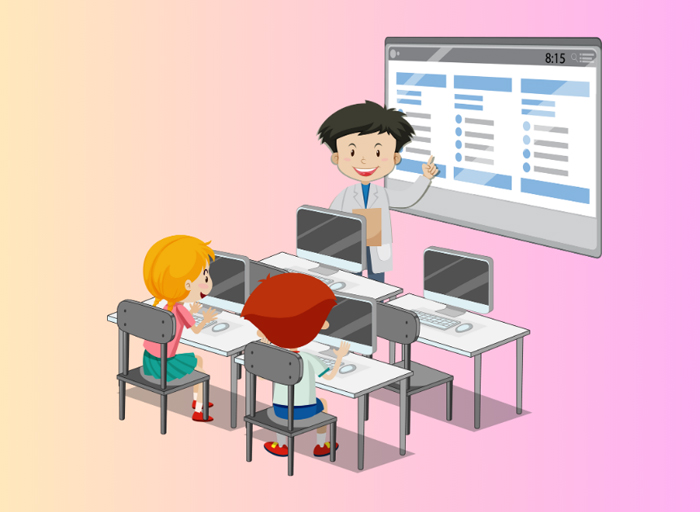
Fostering a Supportive Classroom Community
As a teacher, I understand the importance of building strong relationships with my students. Creating a supportive classroom community is vital for creating an inclusive and engaging learning environment. Here are a few strategies I employ to foster a supportive classroom community:
- Establishing Trust: I believe that trust is the foundation of any successful relationship. I make it a priority to establish trust with my students by being consistent, reliable, and approachable. This helps them feel comfortable sharing their thoughts, concerns, and ideas with me.
- Promoting Respect and Kindness: In my classroom, respect and kindness are non-negotiable. I set clear expectations for how my students should treat one another and model these behaviors myself. This creates a positive and respectful atmosphere where everyone feels valued.
- Encouraging Collaboration: I believe that learning is a collaborative process. I provide opportunities for my students to work together on projects, engage in group discussions, and solve problems collectively. This not only enhances their learning experience but also encourages them to appreciate and respect different perspectives.
Recognizing and Addressing Individual Needs
Every student is unique and has different strengths, weaknesses, and learning styles. To create an inclusive learning environment, it is essential for teachers to recognize and address individual needs. Here’s how I approach it:
- Getting to Know Each Student: I take the time to get to know my students on a personal level. This includes understanding their interests, learning preferences, and any challenges they may face. By knowing my students as individuals, I can tailor my teaching approach to meet their specific needs.
- Providing Differentiated Instruction: Differentiation is key to ensuring that every student has the opportunity to succeed. I adapt my lessons and learning materials to accommodate different learning styles, abilities, and interests. This allows me to meet each student at their level and provide the necessary support or challenge they require.
- Offering Individualized Support: I understand that some students may require additional support outside of the regular classroom instruction. I provide one-on-one support, extra practice materials, or additional resources to help these students succeed. This personalized approach ensures that every student feels valued and supported in their learning journey.
By focusing on building relationships and addressing individual needs, I strive to create a positive and inclusive learning environment for my students.
Reflective Practice and Professional Development
Self-Reflection and Evaluation
As a teacher, it is essential that I engage in regular self-reflection and evaluation to enhance my teaching practices and improve student outcomes. Through self-reflection, I can critically analyze my teaching methods, strategies, and interactions with students. It enables me to assess what worked well and identify areas where I can make improvements.
To facilitate self-reflection, I can use various tools and techniques, such as journaling, classroom observations, and seeking feedback from colleagues and mentors. By examining my teaching practices objectively, I can gain valuable insights into my strengths and areas for growth. This process allows me to make necessary adjustments and refine my instructional approach.
Continuous self-evaluation is crucial in my professional growth because it enables me to identify areas where I can deepen my knowledge and skills. By regularly assessing my teaching performance, I can identify areas of improvement and seek targeted professional development opportunities. This commitment to ongoing learning ensures that I remain up to date with current research, teaching methodologies, and best practices in early childhood education.
Continuing Education and Professional Growth
To stay current in the field and enhance my teaching abilities, I actively participate in continuing education and seek opportunities for professional growth. This includes attending workshops, conferences, and webinars that address key topics and emerging trends in early childhood education.
Engaging in professional development allows me to expand my knowledge base, acquire new teaching strategies, and gain fresh perspectives. I can also network and collaborate with other educators, exchanging ideas and experiences to further enrich my teaching practices. Through these interactions, I can stay connected to the larger educational community and draw upon the collective wisdom of fellow professionals.
In addition to formal professional development opportunities, I embrace self-directed learning. This involves seeking out resources, such as scholarly articles, books, and online courses, to deepen my understanding of specific subjects or improve my instructional techniques. By taking ownership of my professional growth, I ensure that I am constantly evolving as an educator.
Investing in reflective practice and professional development not only benefits me as a teacher but also directly impacts the educational experience for my kindergarten and preschool students. By continuously evaluating and enhancing my teaching practices, I can create a dynamic and supportive learning environment that fosters their growth and development.
Conclusion
As a teacher, my role in creating a positive learning environment for young students is crucial. By establishing clear expectations, promoting kindness and respect, and celebrating diversity, I can foster inclusivity within the classroom. Additionally, clear communication with my students, using simple language, actively listening, and providing regular feedback, is essential for their growth and development.
Furthermore, lesson planning and preparation are key aspects of effective teaching. Setting clear learning objectives, choosing appropriate materials, and incorporating differentiating instruction and active learning techniques help to engage students and enhance their learning experience.
Assessing student progress and providing constructive feedback are vital for their academic growth. Building relationships with my students and fostering a supportive classroom community also contribute to their overall success.
Moreover, reflective practice and continuous professional development are essential for my ongoing learning and improvement as a teacher. By engaging in self-reflection and evaluation, continuously seeking opportunities for professional growth, and participating in continuing education, I can enhance my teaching skills and provide a better educational experience for kindergarten and preschool students.
By implementing these elements of teaching, I can create a positive and enriching environment that supports the growth and development of young learners.

